Centrifugal pumps are the most commonly used industrial pump there is because of their simple design mechanism. They pump liquids by converting rotational or kinetic energy from the impellers to static pressure of the fluid — driven mainly by centrifugal force.
There are several classifications for centrifugal pumps — in terms of impellers, liquid flow, shaft orientation, number of stages, and type of pump casing.
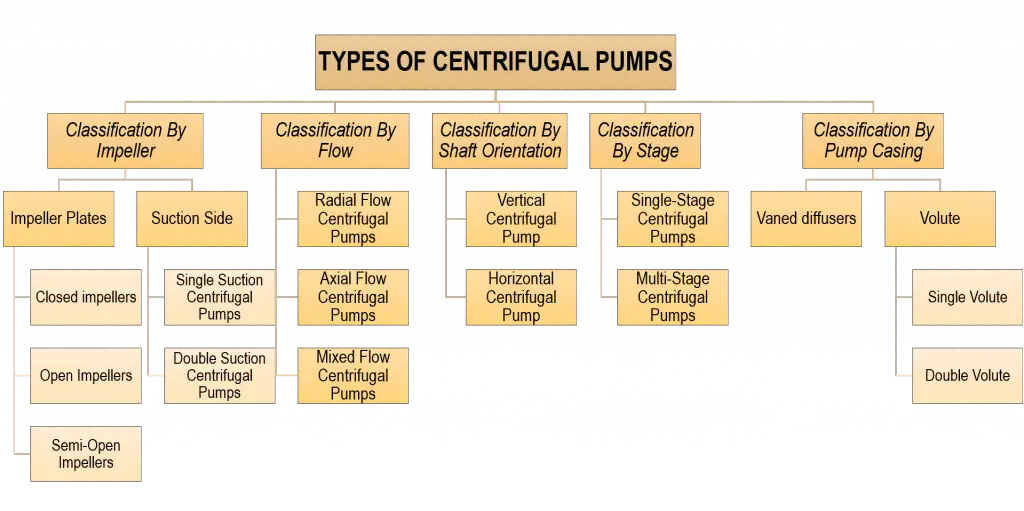

Centrifugal pumps are most efficient in transporting “clean fluids” — meaning it’s best for handling low-viscosity liquid. Closed impellers are used for this type of fluid as it has plate covers on both sides of the impeller. Both the open and semi-open impellers are best for transporting fluids with solids. The semi-open impeller has a cover on one side only, while the open impeller only has a part covered (or none at all but just blades).
An impeller can also be single or double suction. The double suction impeller, as its name suggests, has fluid coming in at both sides. It is used for high flow rates since it’s excellent in preventing cavitation.
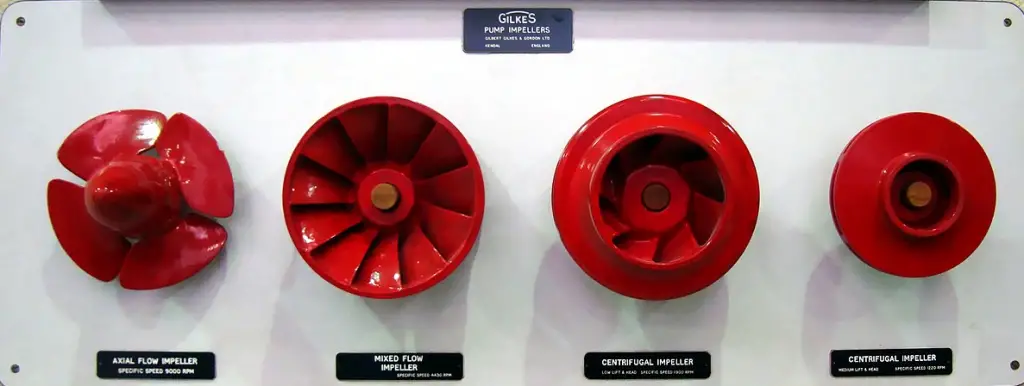
The vane orientation of the impellers influences the fluid movement inside the pump. There are 3 main types of flow impellers:
The most commonly used type of centrifugal pump is the radial flow impeller. From the eye of the impeller, the fluid flows at right angles to the impeller shaft — flowing radially outwards from the center. Radial flow impellers are utilized in low flow and high pressure head operations, especially in oil & gas, and chemical processing industries.
The axial flow impellers look and work like boat propellers, such that it pushes the fluid away from the center — parallel to the shaft. It’s usually used for high flow and low pressure head operations, such as in the agriculture or irrigation industry.
The mixed flow impellers direct the fluid at more than a 90° angle. It’s used for medium speed ranges, in between radial and axial.
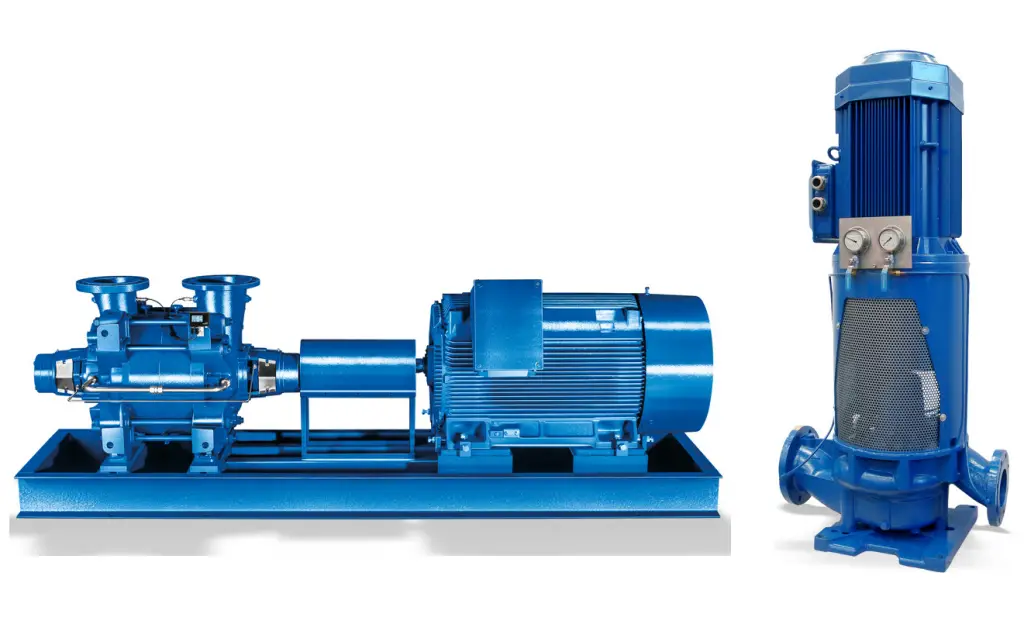
The impeller shaft can be a vertical or horizontal centrifugal pump. Vertical centrifugal pumps are more commonly used because the NPSH is flexible, unlike horizontal centrifugal pumps. They can also handle high pressure and high temperature conditions, especially in petrochemical, desalination, and chemical processing plants.
On the other hand, horizontal centrifugal pumps are used for HVAC systems, spraying systems, water circulation, and other more general processes. It requires less headroom and the orientation of mechanical parts allows for easy maintenance.
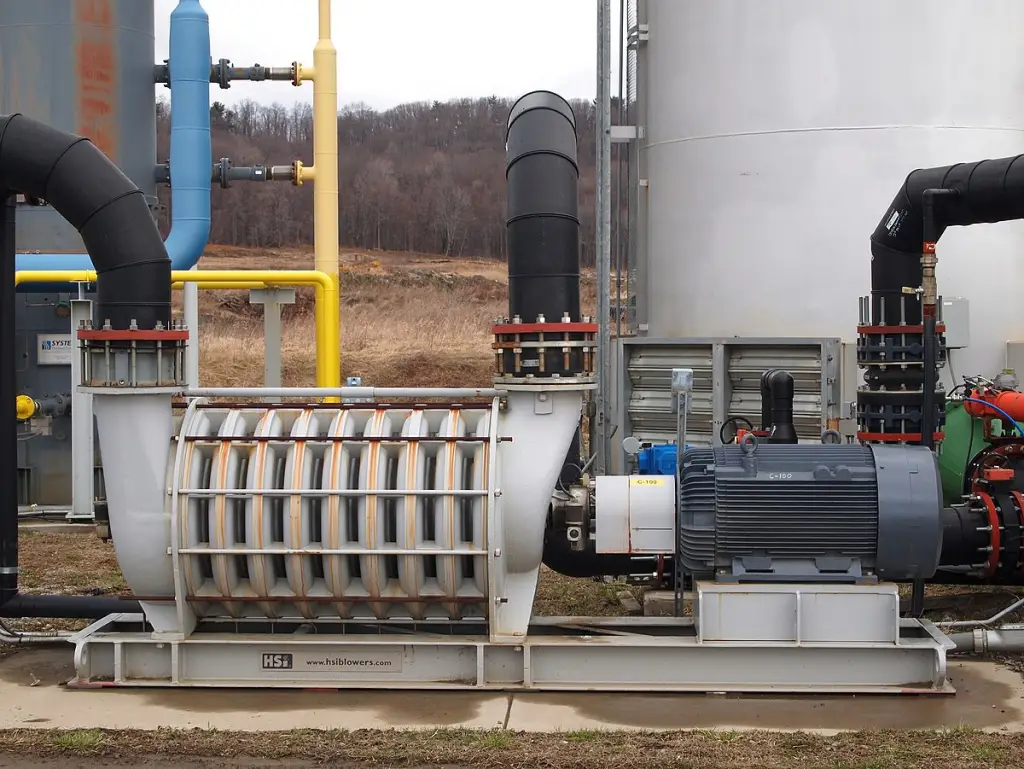
The difference between a single-stage and a multi-stage centrifugal pump is the number of impellers inside the pump. In multi-stage centrifugal pumps, there is more than one impeller inside the pump. For example, a three-stage centrifugal pump has 3 impellers connected in series — creating a higher pressure head at each stage. In single-stage centrifugal pumps, there is only one impeller for high flow rates and low pressure heads.

The volute and diffuser are both responsible for creating a positive pressure head for the fluid to flow towards the exit nozzle. The diffuser vanes, however, are able to slow down the velocity more than with volutes. That’s why diffuser centrifugal pumps are more efficient, albeit more costly, especially for processes requiring higher pressure heads. Most multi-stage centrifugal pumps have vaned diffusers and vertical shafts.
All centrifugal pumps are not made the same, hence, there are plenty of classifications. Here’s a general guide matching which centrifugal pump types are used for which process applications.
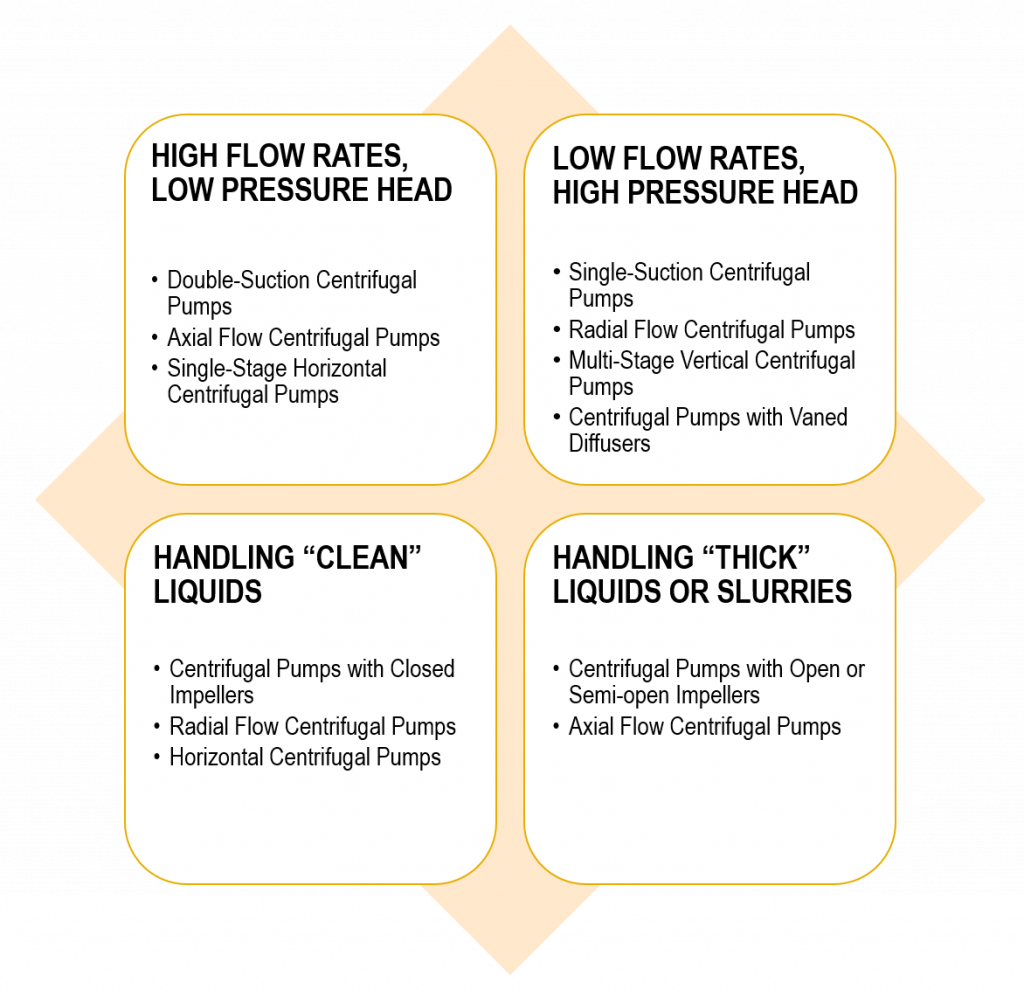
Yes, vertical turbine pumps are a type of centrifugal pump that is commonly used for pumping water from deep reservoirs. Its impellers are placed underground for suction, which are powered by a motor located on the surface level by means of a long vertical shaft.
There are centrifugal pumps that are designed to handle liquids with solid content using open impellers. However, there will be reduced efficiency since it will likely clog the impellers, degrading the mechanical parts and requiring more pumping work.
Yes, it is readily available and relatively cheap. The reason why centrifugal pumps are the most in-demand industrial pumps is because of their simple design and easy maintenance. Compared to other pumps, it doesn’t have that many moving parts.
4 Responses
I like the tip you gave that the number of impellers included in the pumps differentiates according to the design of the pump. My uncle informed me a few nights ago that he and his business associates were hoping to find centrifugal pumps that could offer different series applications for his pump project. Thanks to this instructive article, I’ll tell him that it will be much better if he consults a trusted pump products supplier company as they can answer all his inquiries.
It stood out to me when you explained that centrifugal pumps are popular because of their simple design and easy maintenance. Since centrifugal pumps are easy to maintain, it seems like you would want to have them inspected by a professional at least once a month. Hiring a professional would save you time because you wouldn’t have to perform the inspection yourself.
Thanks for helping me understand that a commonly used option is the vertical centrifugal pump because it is flexible. I wonder if that is used as deep well pumps if ever we get one installed in the future. We just need to know our options to have an idea what to choose once we have the budget to have another source of water to save money in the long run.
It’s great that you described different types of centrifugal pumps and their applications. My dad wants to install an irrigation system for my mom’s garden next weekend, so I think he’d benefit from reading your insight about horizontal centrifugal pumps. Thanks for the information on using a centrifugal pump for spraying and aware circulation systems.